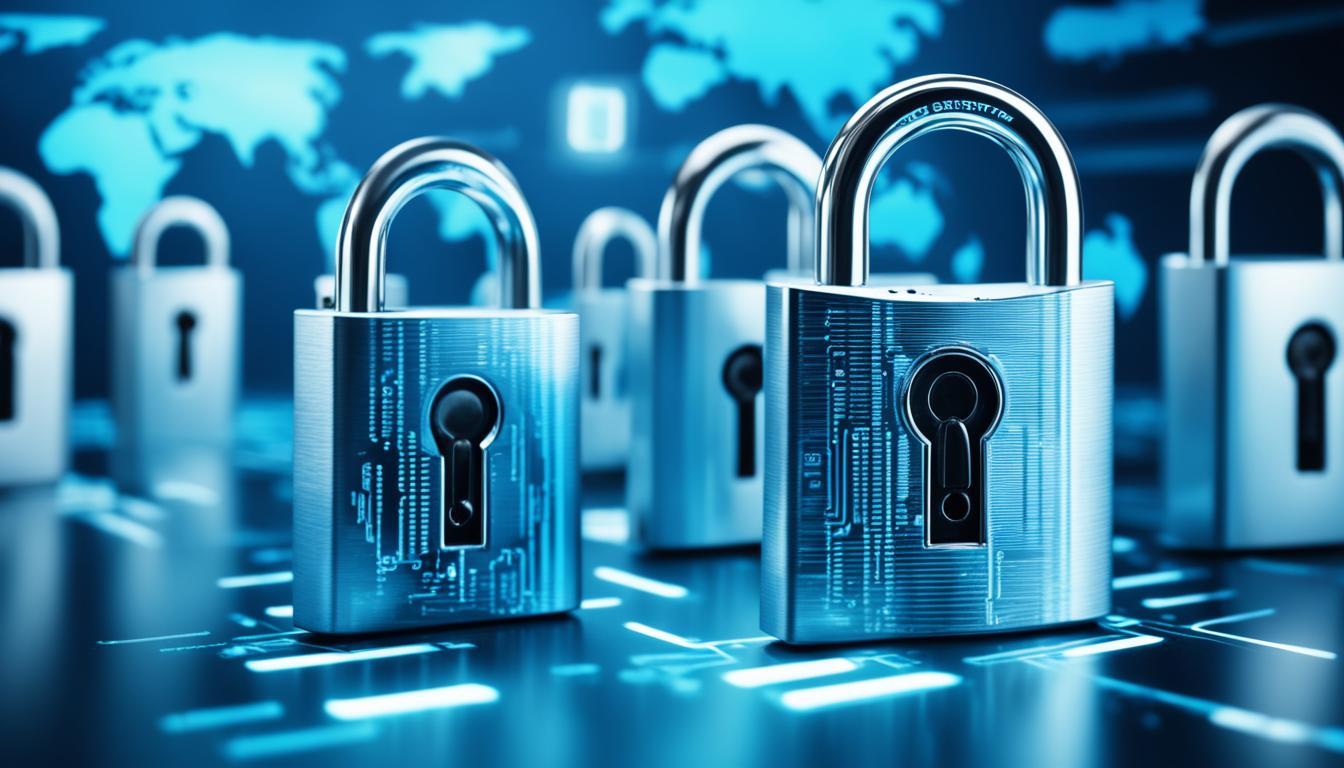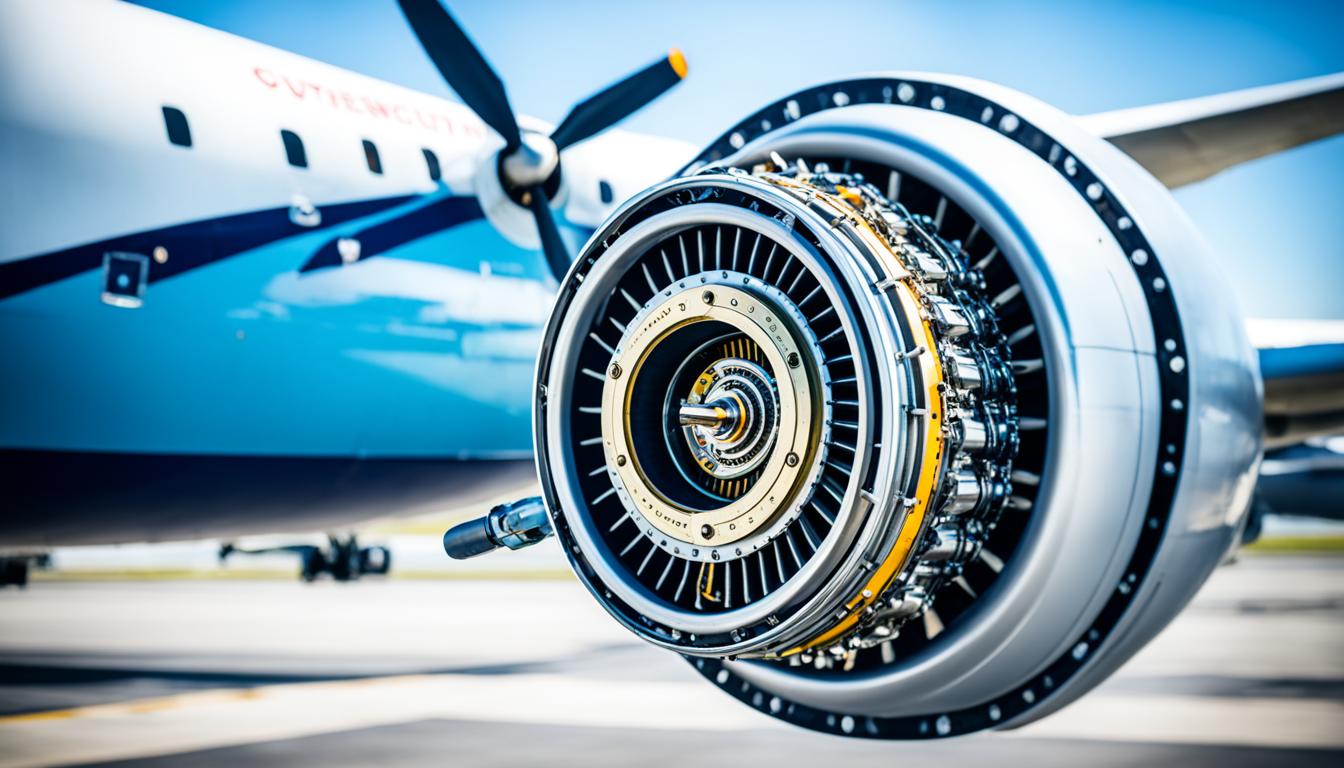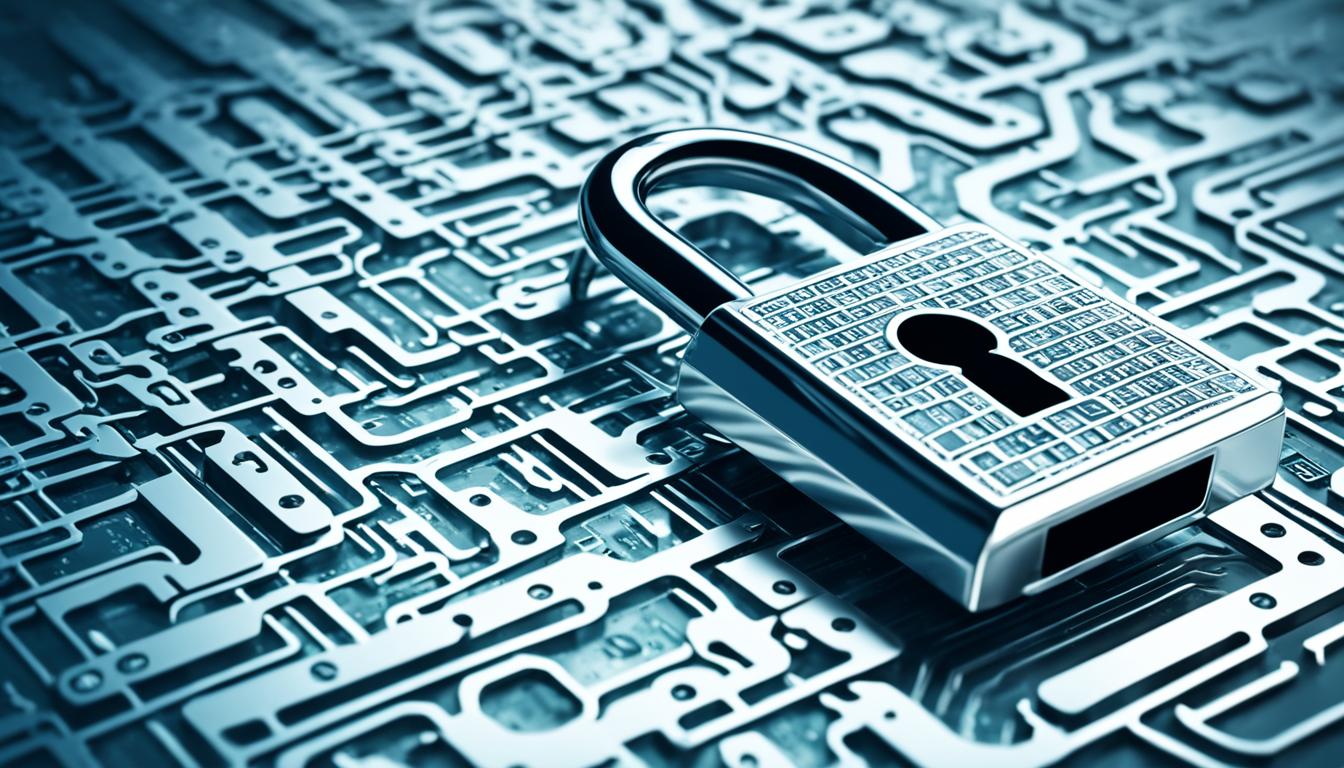Welcome to our detailed guide on the TSA Cybersecurity Directive. This framework is key for the aviation field. The TSA introduced it to improve security against cyber threats.
Organizations often find it hard to meet the TSA cybersecurity directive. We, at [Your Company Name], are here to help. We offer expert advice and support. This ensures you can follow the rules and set up good cybersecurity at your airport.
We have a lot of experience and know-how in this area. We’ll make sure you understand what the TSA directive requires. Our solutions are tailored to help you build a strong cybersecurity plan. This plan will follow all TSA rules, keeping your airport safe and compliant.
Come with us as we dive into the TSA’s cybersecurity rules. We’ll look at the threats and put strong safety measures in place. This way, together, we can meet the TSA’s standards and reduce the risk of cyber attacks.
Key Takeaways:
- Learn about the TSA Cybersecurity Directive’s effect on the aviation world.
- Get expert help to understand and meet the TSA’s cybersecurity needs.
- Set up good cybersecurity to keep airports safe and ward off cyber threats.
- Follow TSA’s rules with our customized solutions.
- Make sure airports are secure by fighting cyber threats.
Understanding the TSA Cybersecurity Directive: Key Guidelines and Regulations
Organizations in the aviation industry must know the TSA Cybersecurity Directive well. It explains key rules for better cybersecurity and safety at airports. The Transportation Security Administration (TSA) set these rules to fight cyber dangers.
The TSA Cybersecurity Directive tells us exactly what to do to stay safe from online attacks. It gives a game plan for every airport and group involved in flying. Following these steps helps lower risks and keeps us up to the security level needed.
- Gaining a thorough understanding of the TSA Cybersecurity Directive is the first step towards cybersecurity compliance.
- Implementing the necessary cybersecurity measures in accordance with the directive is vital for safeguarding critical systems and data.
- The TSA guidelines encompass various aspects of cybersecurity, including network security, data protection, and incident response.
- Compliance with TSA regulations ensures that aviation industry stakeholders are well-equipped to mitigate cyber threats effectively.
But just having the rules is not enough. It’s key for businesses to use them well. They should work with experts in cybersecurity. These pros can give the help needed to follow rules correctly.
By working with cybersecurity experts, businesses can make sure they’re doing well in following TSA’s rules. They get advice on doing checks for weak spots, making plans for when things go wrong, and setting up strong safety steps.
Putting the TSA’s cybersecurity steps into practice is a big deal. It keeps the flying world safe from new cyber risks. Staying in touch with the latest, following rules, and getting help from cybersecurity experts all boost safety.

Identifying Cyber Threats in the Aviation Industry
Now, the aviation industry is under serious threat from cyber dangers. These threaten both airports and airlines. They range from ransomware to huge data breaches. Not handling them well can lead to big problems. It’s key to know these dangers to protect against them and follow TSA rules.
Ransomware is a big issue for aviation. Here, hackers lock away important data. They then ask for money to let it go. This action can stop airport work, making flying unsafe and losing a lot of money. It’s crucial for airports to keep up with ransomware news and have strong security to avoid these problems.
Data breaches are also a major threat. The industry has lots of personal and operational info. A data breach can leak private data and even flight plans. Criminals want this to steal identities or do more harm. To stay safe, airports must follow strict data rules and industry advice.
Phishing is another big risk. This is when criminals pretend to be someone else to trick people into giving info. If they get in, they can cause a lot of damage. To fight this, airports should train staff well and have good email checks to stop these frauds.
Quote:
“The aviation industry operates in a highly interconnected digital ecosystem, creating numerous entry points for cyber threats. To protect against these risks, airports and airlines must stay vigilant, implement robust cybersecurity measures, and foster a culture of cyber awareness.” – Cybersecurity Expert
Handling cyber threats well means making a solid plan. This plan should check for weaknesses, have strong protections, and keep info safe. Watching networks and systems all the time is a must. This way, any cyber attacks get spotted and stopped quickly.
Focusing on cybersecurity makes airports safer, keeps things running smoothly, and reassures passengers and others. Knowing about threats and having the right defenses is crucial to keep the aviation industry safe from online dangers.

Implementing Cybersecurity Measures for Airport Security
In today’s digital age, having strong cybersecurity at airports is vital. We need to keep critical systems and data safe from online threats. It’s important to be proactive and follow strict rules to meet TSA guidelines. Let’s look at how to make airport cybersecurity better.
Network Security: Keeping the airport’s network safe is key to cybersecurity. Make your network strong by using firewalls and checking for weak points often. This helps keep hackers out and prevents data loss.
Endpoint Protection: Securing every device that connects to the airport’s network is also critical. Use good antivirus programs and update them regularly to stop viruses. Setting up safe device settings and limiting who can make changes also prevents trouble.
Data Encryption: Encrypting important data keeps it safe from anyone who shouldn’t see it, both moving and at rest. Use encryption on any storage, communication, and cloud services at the airport. This reduces the chance of a data leak if there’s an attack or breach.
Employee Training: Teaching staff how to stay safe online is a must. Hold regular training to teach about common online threats. Building a team that knows what to watch for and how to act keeps the airport safe.
Remember, cybersecurity needs constant attention and updates. Always check and improve your computer safety at the airport. Stay up-to-date with new threats and the latest ways to protect against them.

Best Practices for Cybersecurity Compliance in the Aviation Industry
Cybersecurity compliance is key for the aviation industry. It safeguards valuable data and fights off cyber dangers. By following top standards, companies build a solid defense against changing attack methods.
Ongoing Monitoring
Keeping an eye on cybersecurity is a must. Set up a monitoring plan that spots threats in real-time, checks logs, and observes network activity. This helps fix weak spots fast, stopping attacks before they happen.
Incident Response
A ready plan for when things go wrong is very important. Outline clear steps for dealing with an attack or breach. Make sure everyone knows their part by doing training and drills.
“Being prepared in cybersecurity is crucial. A good response plan cuts damage from attacks and speeds up recovery.”
Employee Training
Workers are frontline defenders in keeping cybersecurity up. Train them on current threats and safe data practices. Promote a mindset of staying alert and enforce strict rules like strong passwords.
Staying Updated
Cyber threats keep changing, with new risks always appearing. Keep in the loop with the latest in aviation cybersecurity. Read newsletters, browse blogs, and go to conferences to stay ahead on trends and methods.
With these top steps, your business can form a strong defense against cyber threats. Securing the aviation sector protects not only data but also passenger safety and trust.

Expert Support and Guidance for TSA Cybersecurity Compliance
Understanding the TSA Cybersecurity Directive is critical. Seeking help from experts is key. By working with cybersecurity pros, you ensure compliance and boost security. They offer custom solutions to meet your needs. This includes conducting checks, making plans for incidents, and improving overall security.
Working with experts who know the TSA directive well is very beneficial. They can help make your aviation operations safer. By working together, you can tackle new cybersecurity challenges quickly. This helps you spot and stop risks before they become big problems.

Teaming up with cybersecurity pros gives you a lot. They share their deep knowledge and experience in aviation. They help you put the right security measures in place. This keeps your airport safe and meets the TSA’s rules.
Also, experts can teach you the newest cybersecurity trends and tips. They keep you updated on threats. By using what they know, you set up strong security. This fits the high standards of aviation. They help you face cybersecurity challenges head-on.
Benefits of Expert Support and Guidance
Working with cybersecurity pros for TSA compliance has many benefits:
- Access to specialized aviation industry knowledge
- Help with finding and fixing security weaknesses
- Advice on reacting to cyber threats fast
- Getting security solutions that fit what you need
- Enhancing airport security with strong measures
- Keeping up with rules for ongoing compliance
With the right help, you can handle the TSA directive well. It gives you peace of mind against cyber dangers. Your airport will stay secure and meet the highest security standards.
Conclusion
In conclusion, it’s key to follow the TSA cybersecurity guidelines in the aviation industry. These rules help airports spot and stop cyber threats. This keeps our airports safe.
Implementing strong security is a must. Ensuring our networks and data are safe is part of this. Airports need to use various methods to protect against cyberattacks.
Moreover, staying alert in the changing cyber world is crucial. Getting expert help with TSA rules is a good idea. These pros can help improve security programs and plan for cyber incidents.
FAQ
What is the TSA Cybersecurity Directive?
The TSA Cybersecurity Directive sets rules to make flying safer. It was made by the Transportation Security Administration. The goal is to improve internet security in the flying world. This also helps keep airports safe.
What are the key guidelines and regulations in the TSA Cybersecurity Directive?
This directive has rules on good computer security. It talks about keeping the internet networks safe. It also mentions protecting the computers people use, how to react if something bad happens, and making sure everyone knows how to keep things safe. These rules are very important.
What are the cyber threats in the aviation industry?
The aviation world is at risk from many internet dangers. These include bad software that demands money to fix, stealing data, and getting into important computer systems without permission. It’s important to know about these dangers so measures can be taken to stay safe and follow the TSA rules.
How can I implement cybersecurity measures for airport security?
You can make airports safer from internet dangers in a few ways. Start by making sure the internet networks are well-protected. Then, keep the computers people use safe. Always keep the information on these machines a secret by using codes. Check for weak spots often and make a plan on what to do if something bad happens. These steps are key to keeping the flying world secure from online threats.
What are the best practices for cybersecurity compliance in the aviation industry?
The best ways to stay safe online in the flying world are continuous checks, teaching everyone how to spot and stop internet dangers, making sure only the right people can get in, testing how easy it is to break in, and having a ready plan if something goes wrong. Following these well-known and suggested steps is vital for a strong online safety setup.
How can expert support and guidance help with TSA Cybersecurity compliance?
Getting help from people who know a lot about internet safety can make following the TSA rules easier. These experts can offer solutions that fit your needs, check for weak areas, make plans to act in emergencies, and upgrade your internet safety setup. This way, you can better follow the TSA’s online safety rules.


